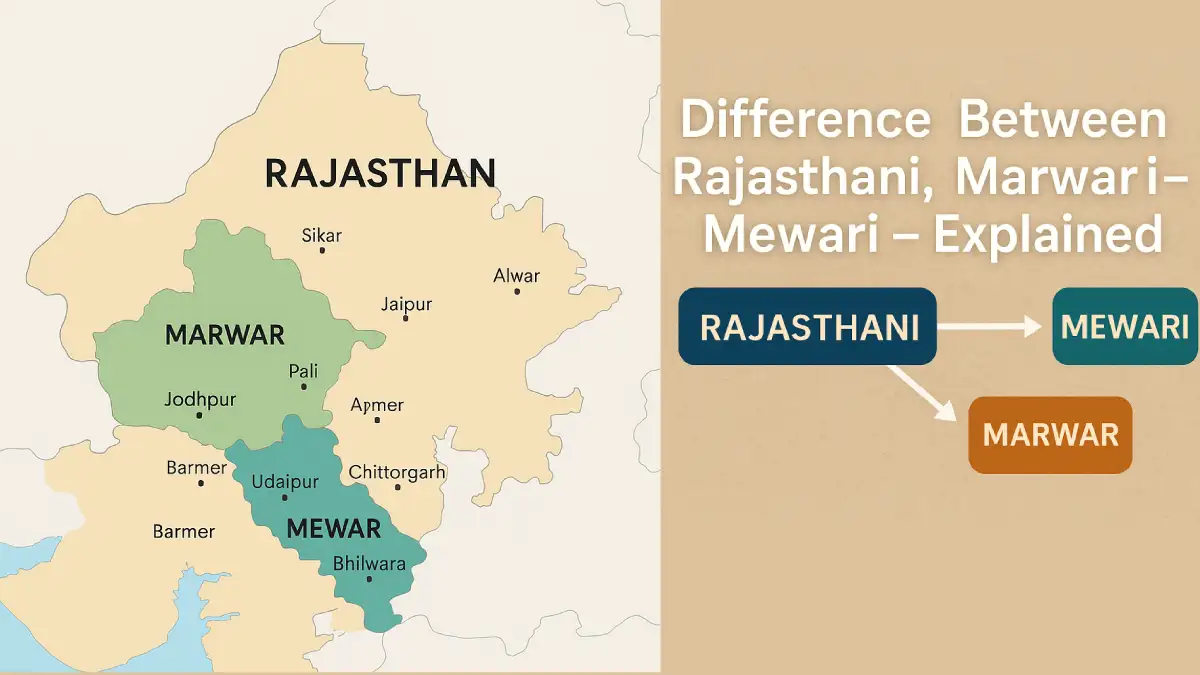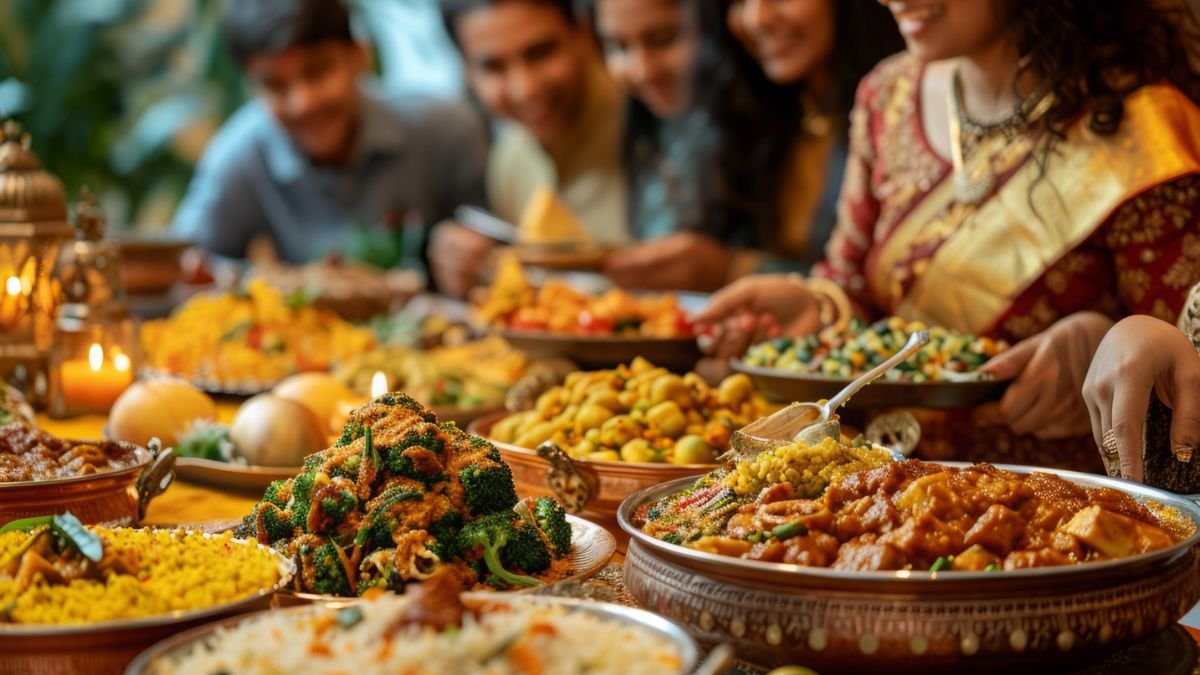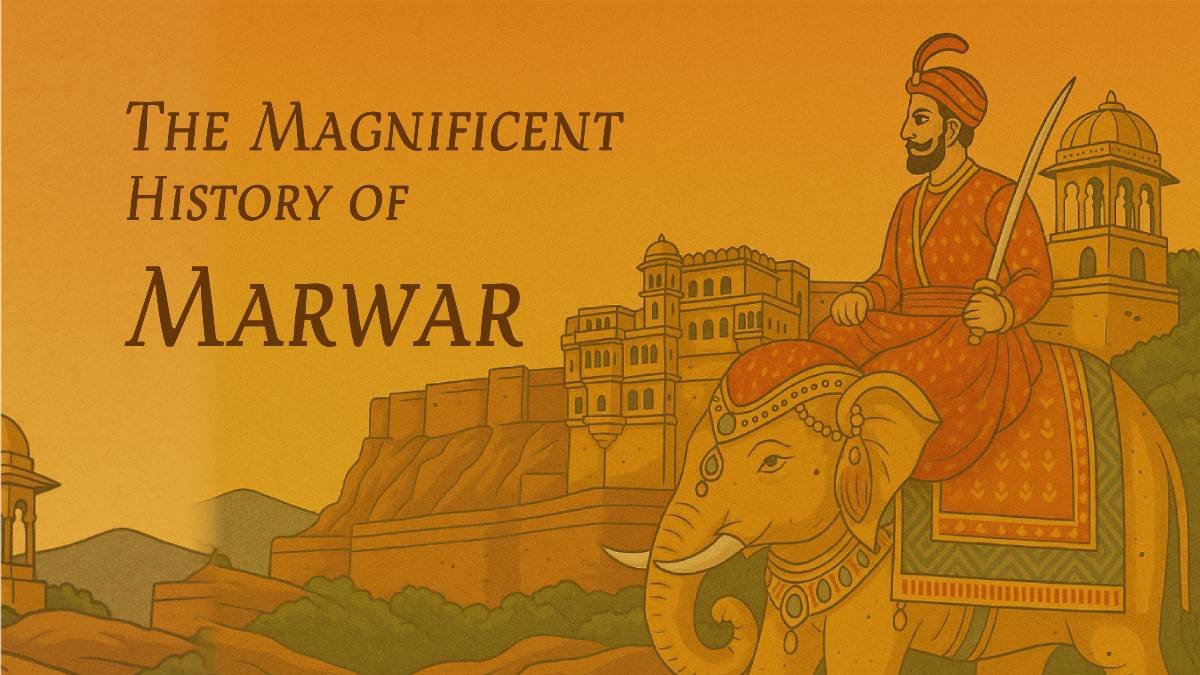Marwar, situated in the stark yet culturally vibrant expanse of western Rajasthan, has long captured the imagination of historians and travelers alike. With its camel-traveled deserts, grand forts, and a legacy of valor and resilience, Marwar’s story is deeply interwoven with the rise and reign of the Rathore dynasty, who transformed a rugged tract into one of the most formidable powers in Rajputana.
Origins: The Genesis of Rathore Rule
The roots of Marwar’s royal saga trace back to the collapse of the Rashtrakuta dynasty. Descendants of Rashtrakutas migrated northward, establishing themselves in Kannauj as the Gahadavala dynasty. After Kannauj’s fall in the 12th century and the death of Emperor Jaichand in the Battle of Chandwar, his descendants journeyed westward and ultimately settled in Marwar. Here, Rao Siha (also known as Rao Siyaji) emerged as the founder of the Rathore dynasty in 1226 CE after conquering Pali. The early Rathore rulers faced the daunting challenge of subduing local chieftains, Bhils, and establishing legitimacy in a harsh and sprawling landscape.
Forging a Kingdom: Expansion and Early Capitals
The Rathores expanded through strategic warfare and alliances, gradually consolidating their hold on the region. Capital cities shifted with political fortunes, moving from Khed and Pali to Mandore. By the late 14th century, under Rao Chunda, Mandore became the power center after he defended it from the Tughlaq Empire and annexed surrounding territories such as Nagaur, Sambhar, Khatu, and Ajmer. This shift from a nomadic, martial society to landed aristocracy laid the foundation for later urbanization and the rise of regional courts.
Jodhpur and the Apex of Marwar: Rao Jodha and Successors
A defining moment in Marwar’s history came in the mid-15th century when Rao Jodha reclaimed his ancestral lands and, in 1459, founded the majestic city of Jodhpur. Perched on a rocky outcrop, the imposing Mehrangarh Fort became the Rathore stronghold. Jodha’s consolidation and alliances with fellow Rajput rulers marked Marwar as a dominant power in Rajasthan. His legacy was furthered as his sons founded new states, notably Bikaner (by Rao Bika in 1465). The period also witnessed monumental construction of palaces, temples, and defensive forts.
Warfare, Resilience, and Independence
Marwar’s tale is one of unceasing conflicts, both internal and external. The region was beset by invasions from the Delhi Sultanate, neighboring Rajput powers, Mughal emperors, and eventually the Marathas. Notably, rulers like Rao Maldeo (1532–1562) stood out for military brilliance, successfully repelling invasions and being lauded as among India’s most potent rulers. Later, Rao Chandrasen fiercely resisted Mughal advances for nearly two decades, symbolizing Marwar’s determination to retain its sovereignty.
After Chandrasen, Marwar fell under Mughal sway but, following the death of Aurangzeb, a legendary 31-year struggle led by Durgadas Rathore culminated in the restoration of the kingdom to Maharaja Ajit Singh in 1707. This epoch of persistent defiance cemented the Rathores’ reputation for loyalty and martial valor.
The Marwaris: Society, Culture, and Influence
Alongside royal intrigue and warfare, Marwar’s people—known as Marwaris—developed a vibrant cultural identity. The joint family system, patronage of arts, intricate crafts, and unique cuisine reflect the adaptive spirit of desert society. Legendary for their commercial acumen, many Marwaris migrated across India as traders and financiers, shaping economic hubs well beyond Rajasthan.
Social customs evolved around the hierarchical Rajput order, with festivals like Gangaur, Teej, and iconic Marwari weddings coloring the cultural landscape. Artisans produced dazzling jewelry, textiles, and woodwork, while music and folklore preserved the tales of local heroes and resistance.
Colonial Marwar: Princely State and Beyond
Confronted by the growing power of the British, Marwar entered into treaty relations in 1818, becoming the princely state of Jodhpur under British suzerainty. The Maharajas retained internal autonomy and played influential roles in events such as the Indian Rebellion of 1857 and World War I.
The 20th century brought profound changes as princely states across India negotiated the tides of nationalism and independence. Maharaja Hanwant Singh and his successors guided Marwar through the transition to modern India. In 1949, the state acceded to the Union of India, merging with Rajasthan and thus closing a remarkable chapter of independent Rajput rule.
Marwar in Modern Rajasthan
Today, Marwar’s legacy endures in its architectural splendor, ongoing cultural traditions, and the bustling city of Jodhpur. The descendants of the Rathore lineage remain cultural patrons, while the Marwari community continues to leave a powerful imprint on India’s industry, arts, and philanthropy.
Marwar’s journey—from the embattled reign of Rao Siha to its proud place in modern Rajasthan—is a testament to endurance, adaptation, and cultural richness. The sands of Marwar hold stories of courts and caravans, of wars and revolutions, and of a people whose identity has weathered every storm.




